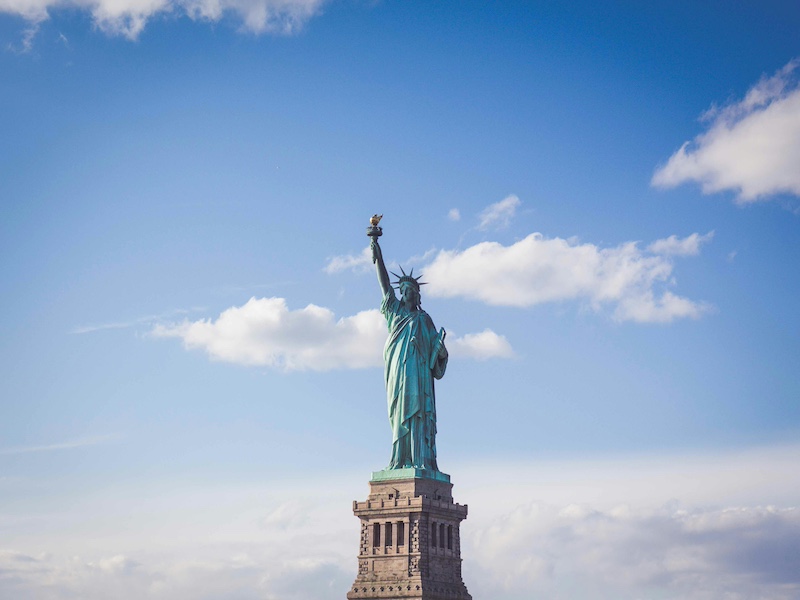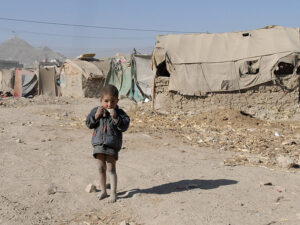The success of a few comes at the expense of the many.
The Statue of Liberty, arm raised powerfully into the air, was the first thing European immigrants would see after voyaging across the Atlantic Ocean. The statue became an icon of people’s perceptions of America. It represented opportunity, hope for a better future, freedom. That perception of America as a land of economic opportunity has since evolved into the American Dream — a dream that is built on misconceptions.
It’s hard to understand the American Dream without looking into the economic beliefs it embodies. The form of capitalism that dominated America during the late nineteenth and early twentieth centuries was ‘liberalism’ or ‘laissez-faire’ economics.
Liberalism centres on a belief that markets are good, and governments are bad. Free markets and private property are the source of all wealth, so the less influence the government has over the economy, and therefore people’s lives, the better.
It creates a meritocracy where individuals, unleashed from the ‘shackles’ of government regulation have the same chance of getting ahead in life. The recipe for success — hard work, endeavour, and a get-up-and-go attitude.
Essentially, without the meddling government creating regulations and getting in the way — you get back, what you put in.
That’s the American Dream — a dream that centres on the belief that you can go from nothing to everything in an environment where free enterprise can thrive.
The issue is that rather than creating a level playing field in the land of opportunity, immigrants faced job shortages and exploitation by employers paying low wages. With limited unions (naturally, any form of regulation is bad) and employment rights virtually non-existent, workers were at the mercy of the capitalist manufacturers, who could pay, and do, what they wanted.

The result was brutal levels of inequality. The economist Thomas Piketty shows that in 1928 (the year when inequality peaked during the twentieth century), the richest 0.1% of Americans owned over 45% of all wealth, while more than 60% of Americans lived below the poverty line.
Rather than a meritocracy, liberalism created an environment where individuals who had a lot, had the opportunity to make a lot more, while those who had too little (and worked for those who had a lot) were trapped in a cycle of poverty.
Exploitative by design
The problem with the American Dream (and the economic system feeding it) is that it is an individual dream, not a social one.
The American healthcare system embodies the problem with a dream that prioritises individual interests over maximising the social good. In 2022, the healthcare industry was worth $4.2 trillion. Private health insurance expenditures accounted for $1.29 trillion (30.4% of overall healthcare costs).
The Kaiser Foundation calculated that in 2021, the average annual cost of health insurance was $7,739 for an individual and $22,221 for a family. This excludes government spending which, at $12,555 per person (as of 2022) is the highest of all Organisation for Economic Co-operation and Development (OECD) countries. To put that into context, Switzerland is second highest with a spend of $8,049 per person.
You would assume the highest government spending coupled with eye-watering insurance premiums would contribute to America having the best healthcare system in the world. But as the graph shows, amongst high-income nations, the US is an anomaly in that it has the highest spend and the lowest life expectancy.

There are lots of factors that feed into why this is the case, but if we look purely at that spend, healthcare in America is designed as a mechanism to create wealth, not to create a system that provides the best possible healthcare service.
When it comes to wealth creation, the CEOs of the top 10 health insurance companies were paid between $13 million and $22 million in total compensation in 2022. There’s the opportunity for individual gain.
Meanwhile, 26 million individuals (8% of the U.S. population) were uninsured (and had no access to healthcare) in 2022.
This is an alarming social failure.
The foundation of any successful society is an effective healthcare system, based around a simple objective — to provide the best service at the lowest possible cost and to guarantee access to every member of society. The objective ensures that healthcare provides the greatest good for the greatest number.
The American healthcare system is set up to provide the best healthcare at the highest possible cost because this is what enables individuals to extract the most amount of wealth from the industry. Whether it serves the needs of everyone is irrelevant.
And that’s why it’s so inefficient, a signification chunk of the $4.2 trillion spent on healthcare isn’t spent on healthcare. It’s spent on the industry that has been created to profit from people’s health.
Toxic outcomes
America is a society designed to extract as much wealth as possible from its citizens to place into the hands of those who are living the American Dream. The country has its priorities twisted upside down, and the outcomes are damning.
It explains why America has the most fast food restaurants (and consumes the most fast food) in the world, which feeds into why America has one of the highest obesity rates (at nearly 42%) in the world.
It explains why America has the highest prison population (at 1.8 million people incarcerated) in the world.
It explains why Americans spend more on prescription drugs than any other country.
It explains why America is the only high-income nation without statutory paid leave.
It explains why the US is the most congested country in the developed world, with American drivers spending an average of 42 hours per year stuck in peak-hour traffic.

Chasing the dream
Rather than questioning the pursuit of a dream that has so many toxic outcomes, most people seem set on pursuing it. Six in ten Americans strive to be mega-wealthy. With nearly 44% believing they can achieve billionaire status.
But the likelihood of achieving the dream is remote. Consider that there are 22 million millionaires in America (6.6% of the population). Meanwhile, Forbes’s latest list of billionaires totals 735, which is 0.0002% of the American population of 333.3 million people.
Those individuals now control more wealth — 57 per cent more — than the 65 million households comprising the poorer half of the population.
Data from the Federal Reserve on income distribution shows that wealth distribution in America has become increasingly concentrated since 1990.

In 2023, the share of wealth held by the richest 0.1% totalled $19.82 trillion. This richest of rich clubs comprises 130,000 households, that have at least $38 million in wealth. The top 0.1% earn on average $3.3 million in income each year. Since 1990, their total share of wealth has grown from 9% to 14% in 2023 — the biggest jump across all wealth brackets.
Contrast this with the bottom 50%. Total wealth in the bottom half of the population totals $3.65 trillion, or 2.4% of total wealth. When you consider that wealth is shared by 166.6 million people, it works out to $22,682 of wealth per individual.
Reassessing the dream
The dream is in dire need of reassessment which must begin with an acknowledgement of a basic characteristic of capitalism, eloquently alluded to by the sociologist, Allan G. Johnson in If Not Capitalism, What?. In it, he argues that capitalism:
“Is not organized to meet the needs of the people who participate in it… if capitalism does happen to meet the needs of people, that’s fine, but that is not the point of the system. The point is to allow individuals to compete with one another in order to maximize personal wealth… This means that when a small portion of the population manages to take most of the wealth for themselves, the system is simply operating as it is designed to do.”
Capitalism is exploitative by design, and that’s why the role of government is so crucial. A core function of government should be to regulate markets to ensure that, firstly, they produce positive social outcomes, and secondly, that wealth generated from economic activity is distributed evenly through society.
Again, this ensures the greatest good for the greatest number.
But liberalism, which morphed into ‘neoliberalism’ when Ronald Reagan came into power in 1980, argues the opposite. That regulation is some kind of evil because it leads to the market not functioning in an ‘optimal’ way.
Cheerleaders for neoliberalism argue that regulation, the very thing that blunts the excessive tendencies of markets, is the thing that leaves everyone worse off. This is a lie. It reduces inequality, which may leave the rich less rich (which is why the argument is made) but this helps to increase living standards for all.
There is a toxic belief amongst many who valiantly defend the claims of billionaires and multi-millionaires that they have earned the money, so they deserve the spoils. But no one works in isolation, we all depend on one another. Any wealth generated depends on society cooperating and working together.
To celebrate the American Dream is to defend the status quo. It is to celebrate inequality, to celebrate the opportunity for individuals to prosper at the expense of society. It is an anti-social dream, where the wealth of the few, depends on the hard work of the many. The American Dream is in dire need of reevaluation. The health (and sanity) of the country depends on it.



